These crispy Polenta Fries are like a party in your mouth! Forget the regular spuds; we're bringing the Italian flair with this unique twist on traditional fries. Seasoned with thyme, honey and parmesan cheese, your guests will go CRAZY over this Italian appetizer!
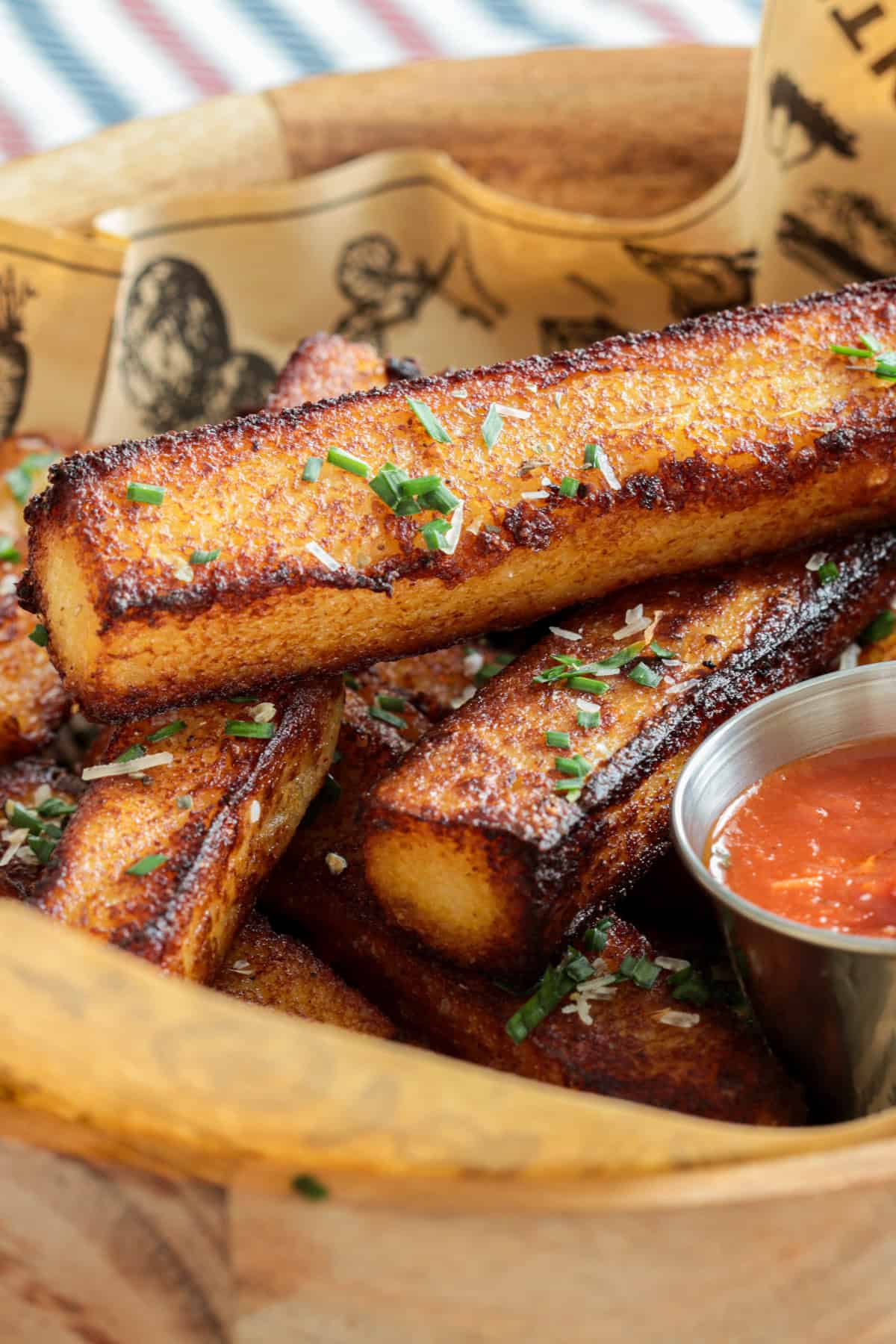
I am obsessed with these polenta fries. They are slightly crispy on the exterior but moist and tender on the inside.
They are a warm and comforting appetizer that your guests will enjoy eating with a glass of wine and great conversation.
Jump to:
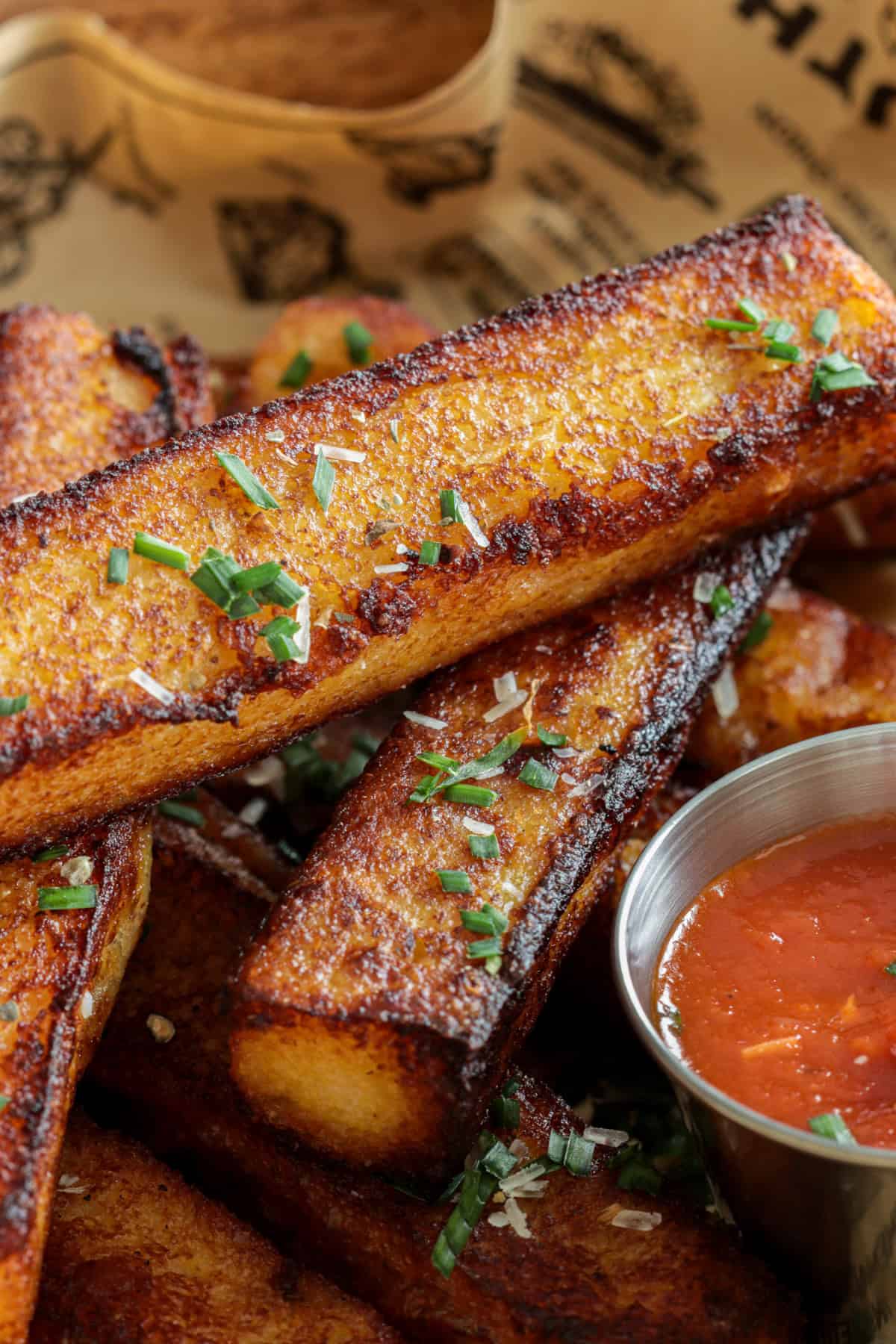
Why My Polenta Fries Are Better!
- I use chicken stock instead of water (more flavorful)
- Added Parmesan cheese (more flavor)
- Sauteed onion and garlic before adding it to the polenta (added levels of yum)
- Added honey (for a sweet note which is delicious)
- Used fresh herbs (this adds a delicious fresh flavor)
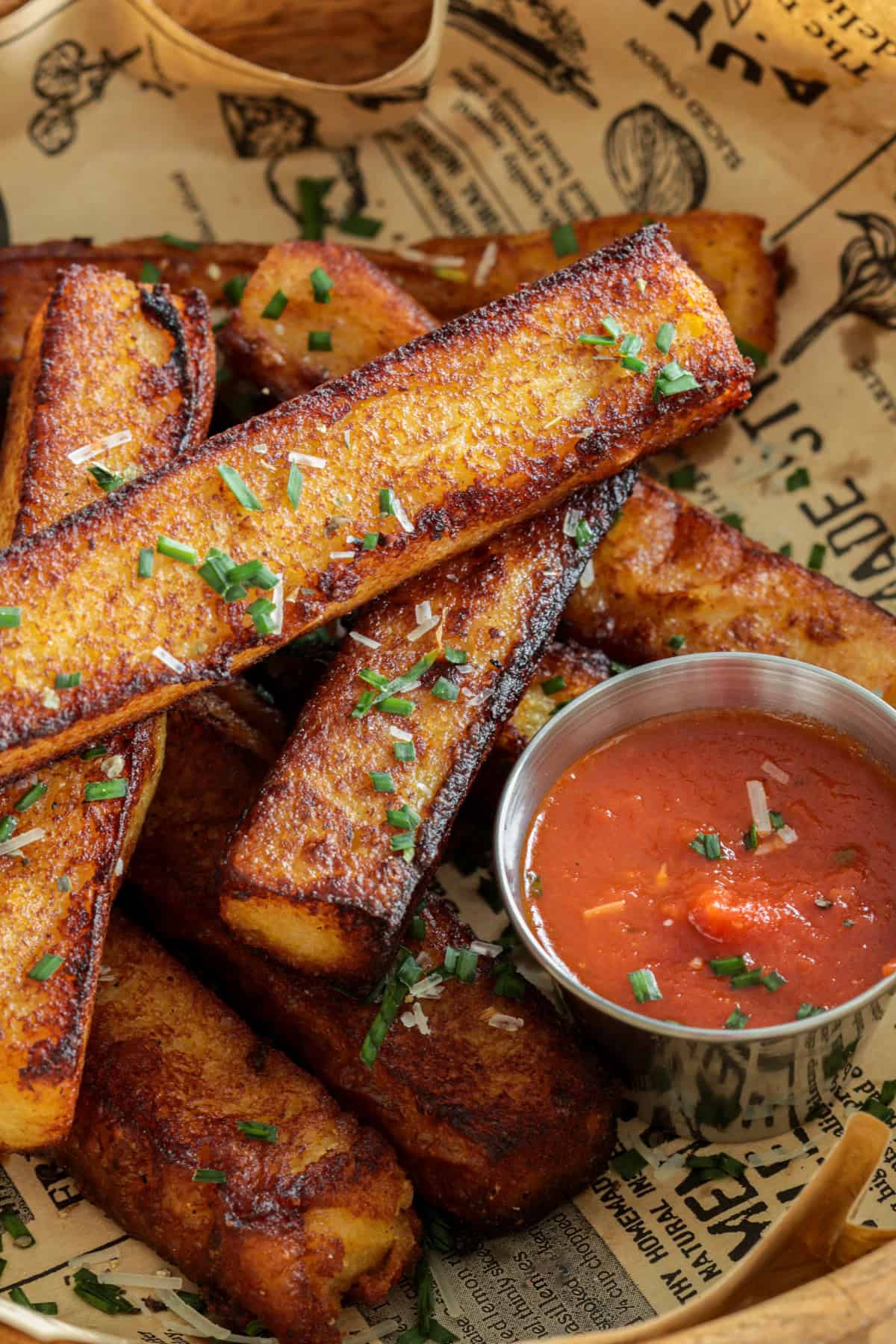
What is the BEST cornmeal for polenta?
When it comes to making polenta, the type of cornmeal you choose plays a crucial role in the final texture and flavor of this beloved Italian dish.
There are generally three main types of cornmeal to consider for making polenta:
- Coarse Cornmeal: Coarse cornmeal, also known as polenta or grits cornmeal, is the traditional choice for making authentic Italian polenta. It has a hearty, rustic texture and provides a satisfying, slightly grainy mouthfeel. Coarse cornmeal is excellent for achieving that classic, robust polenta flavor and texture, perfect for both soft and firm polenta preparations.
- Medium Cornmeal: Medium cornmeal is a versatile option that falls between fine and coarse varieties. It's a good compromise if you want a smoother texture in your polenta without it being overly fine. Medium cornmeal can be used for traditional creamy polenta or a firmer, sliceable polenta, depending on the cooking time and liquid ratio.
- Fine Cornmeal (Instant or Quick Polenta): Fine cornmeal, often labeled as "instant" or "quick" polenta, has a very fine texture and cooks up rapidly. This type of cornmeal is convenient for those seeking a quick polenta fix, as it takes only a few minutes to prepare. However, it may lack the depth of flavor and characteristic texture of traditional polenta made from coarser cornmeal.
Ultimately, the choice of cornmeal for your polenta depends on your desired texture and the time you have available for cooking. Experiment with different types to find the one that suits your palate and the specific recipe you're preparing.
Cutting Your Polenta
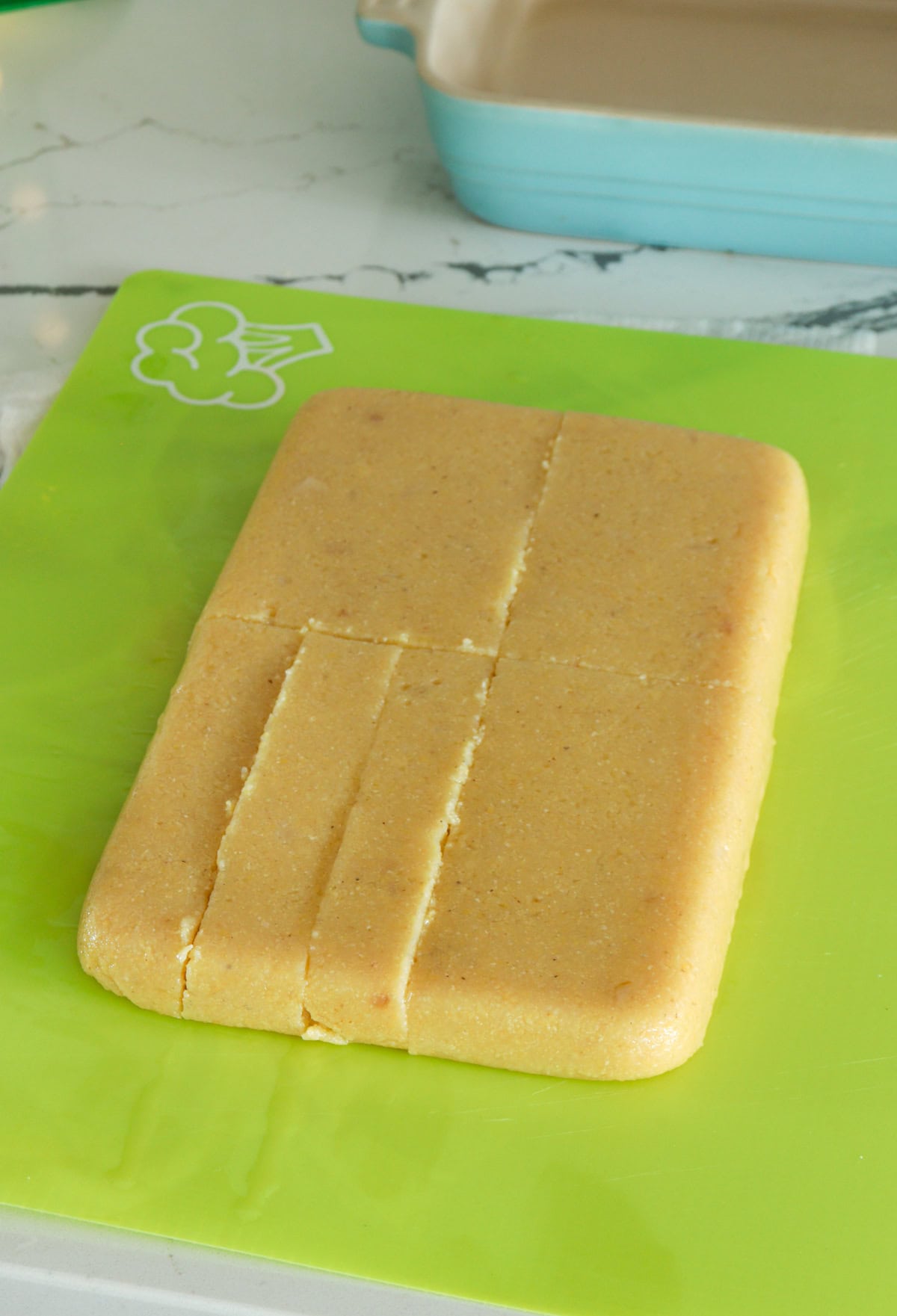
The polenta should slip out of the casserole dish easily . I recommend turning the polenta upside down onto a nonstick sheet or parchment paper.
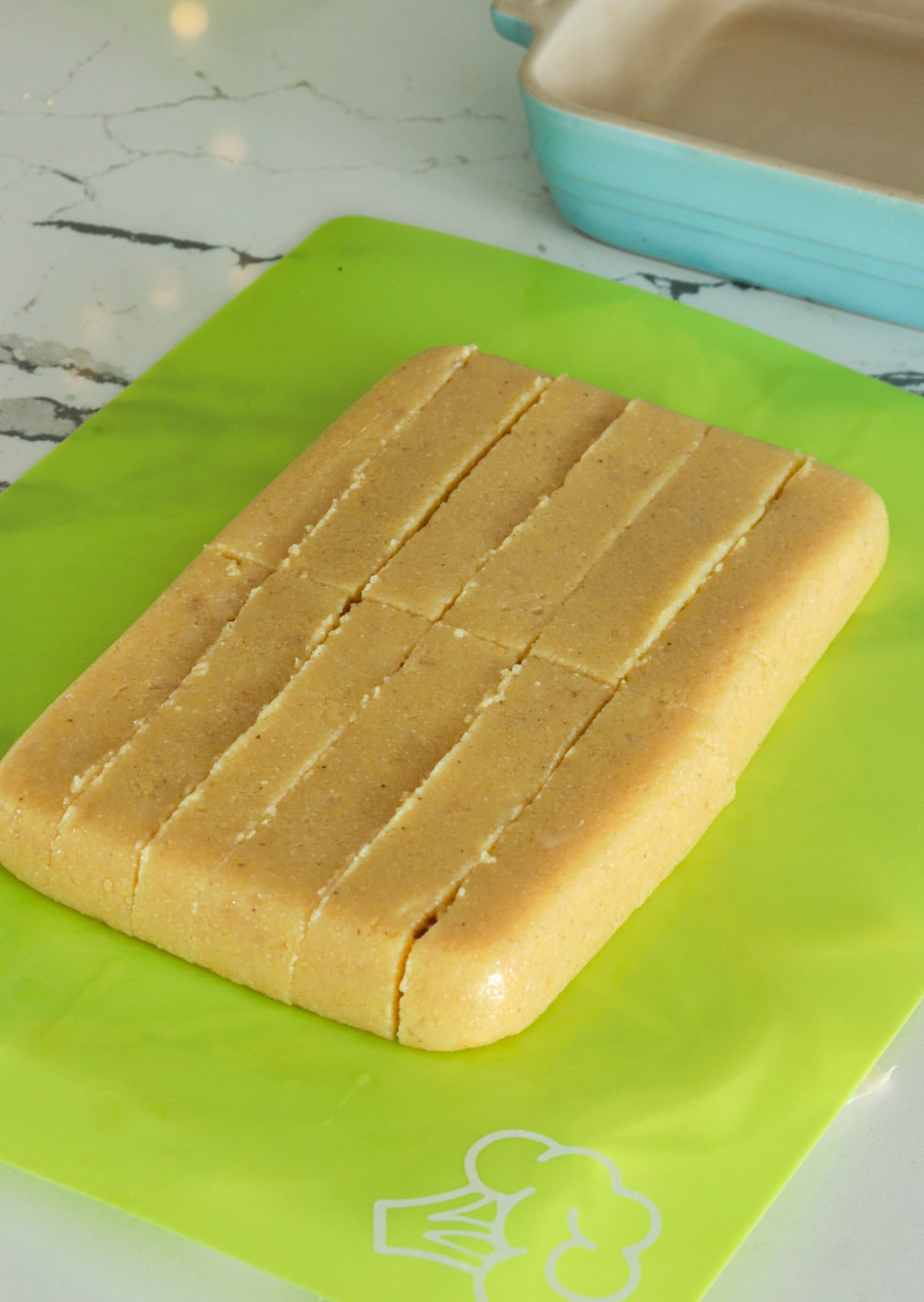
Then cut in half and then again into thirds until you have a total of 12 polenta fries.
Getting The Consistency Right
This is important! You don't want your polenta to be TOO think or TOO thick. If you cannot pour it, it is too thick. If it is soupy, it is too thin.
Know that your polenta will thicken as time goes on so keep this in mind. When you pour it into your casserole dish right, get ready to smooth it down right away before it starts to solidify.
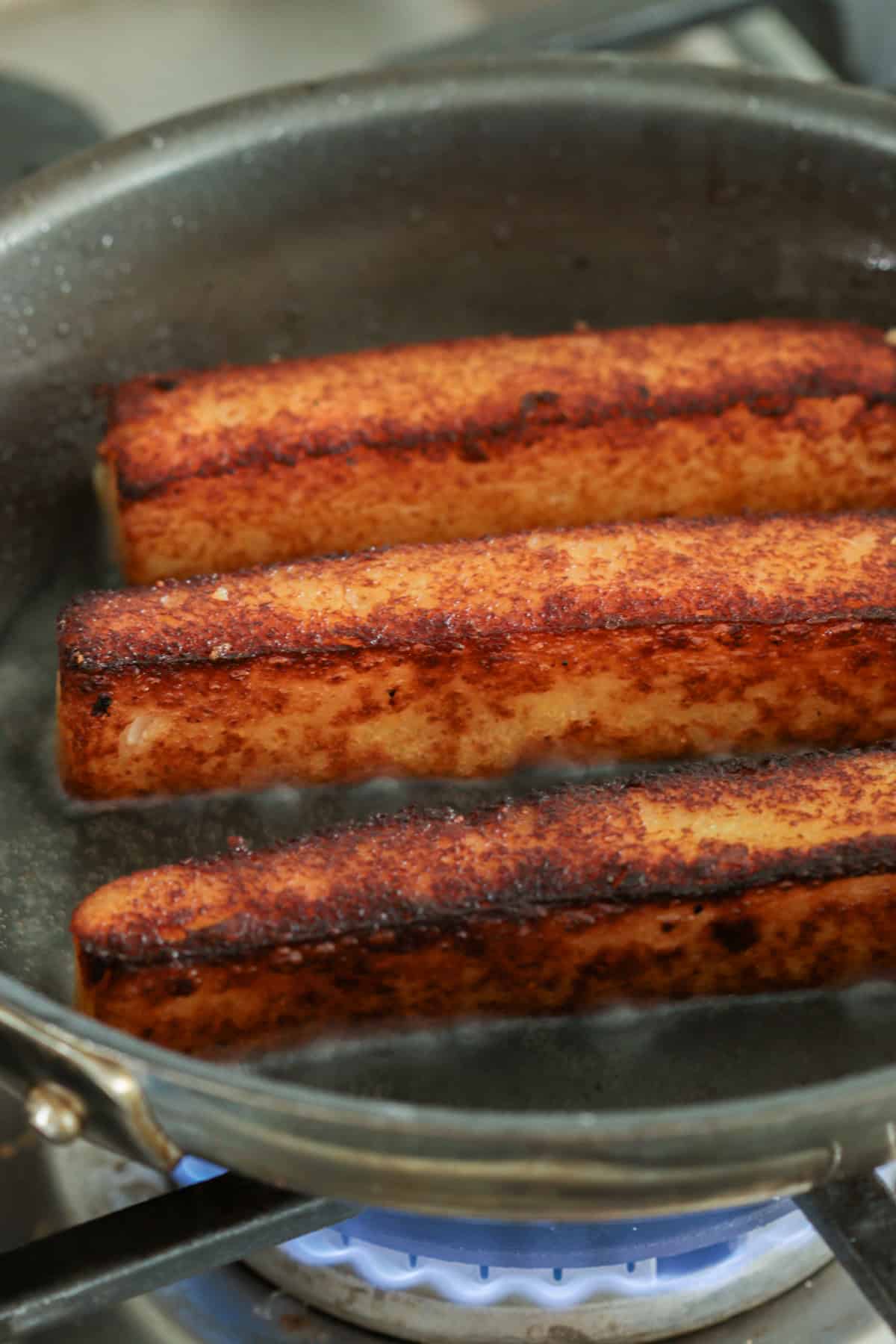
Frying vs. Baking Your Polenta Fries
Frying: It's important to use a nonstick pan when frying. I've tried cast iron and deep frying but I've found a nonstick skillet is best. Polenta is very soft and sticky so it wants to stick to anything it touches.
Baking: If you'd rather not fry your fries, you can bake them with less mess. Use a non-stick mat or parchment paper for best results.
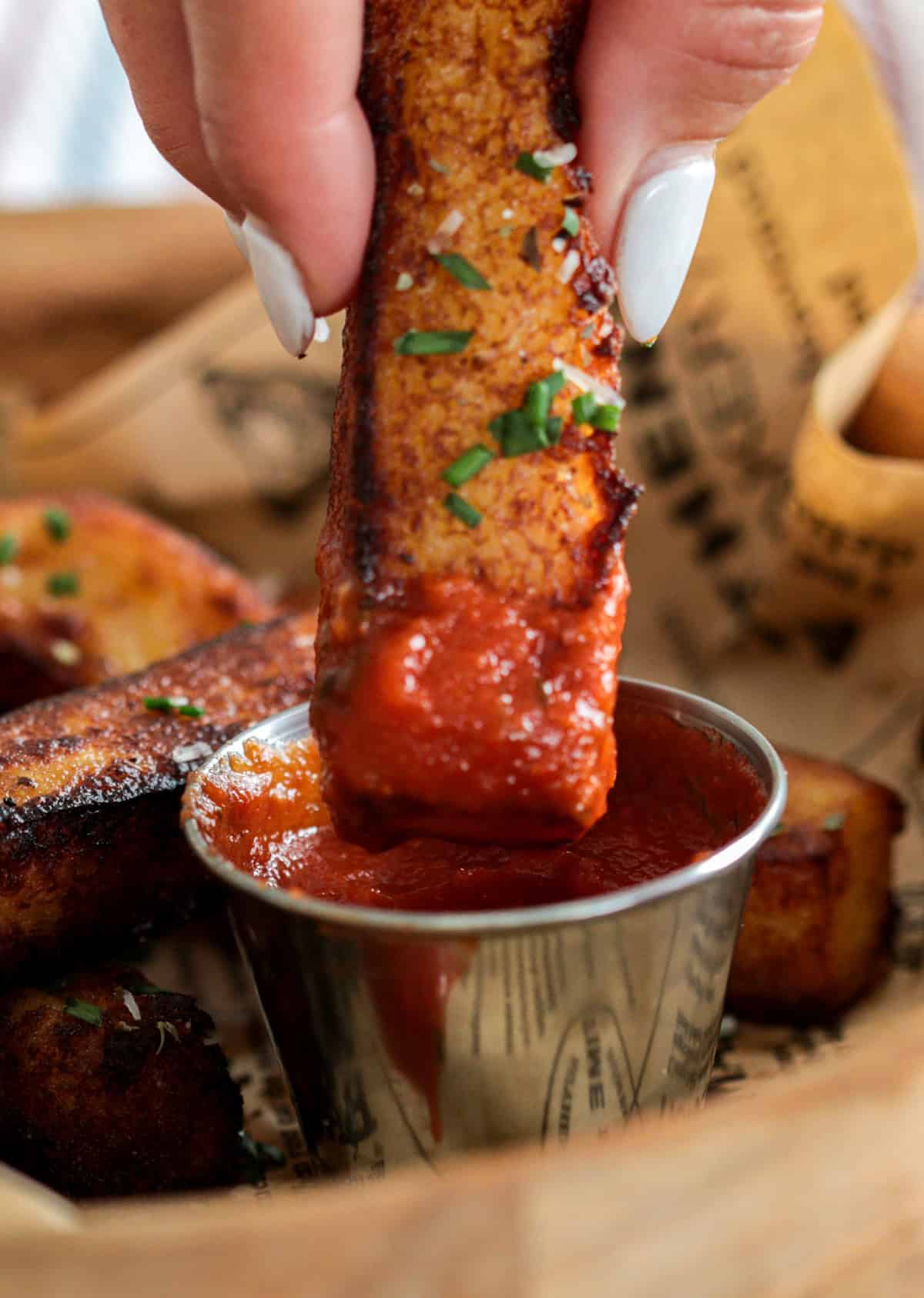
Other popular fry appetizers:
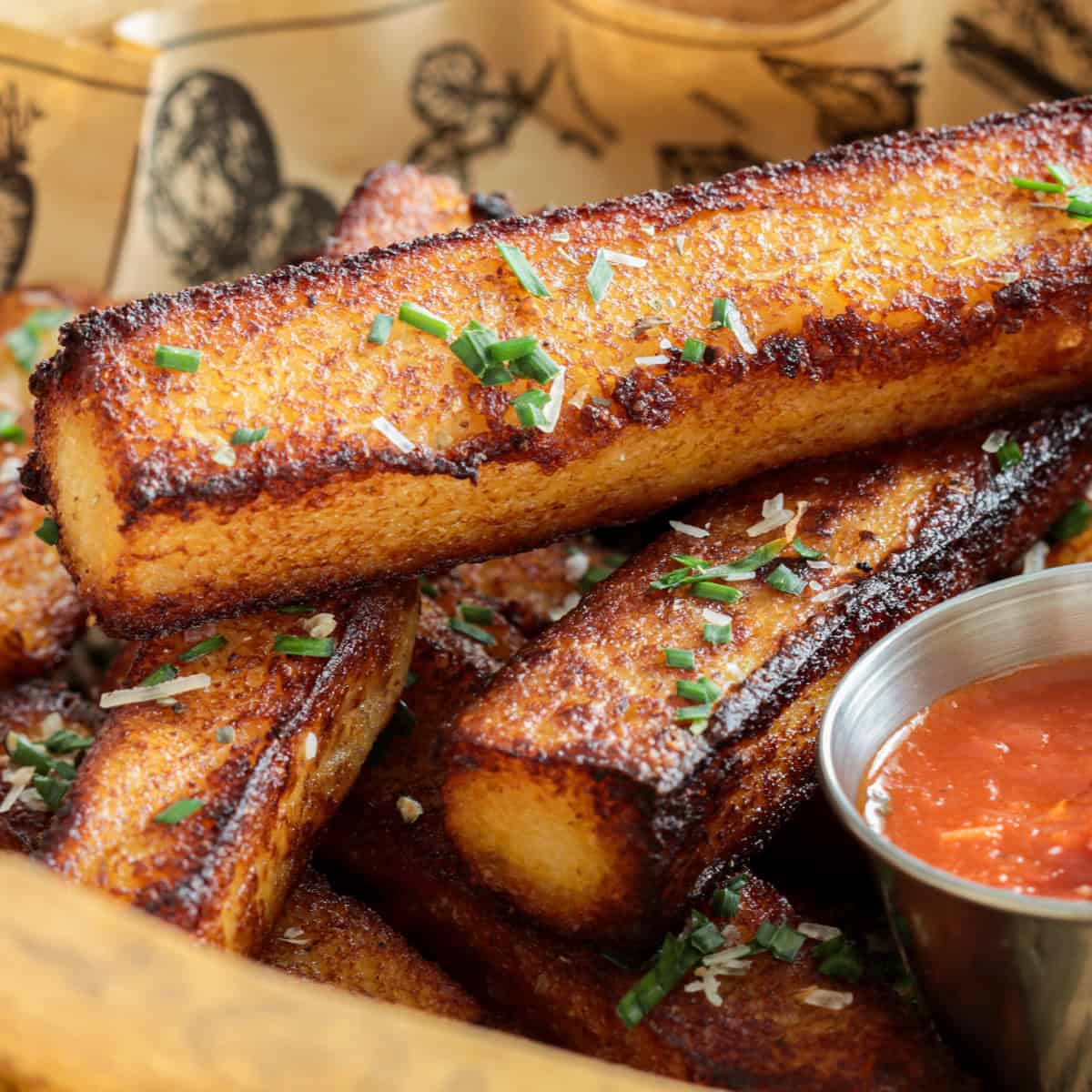
Crispy Polenta Fries
Ingredients
Method
- To a large pot, add your butter and onions and allow to simmer over medium-low heat making sure not to burn the butter or onions.
- After about 3-5 minutes, add your stock and bring to a boil. Once boiling, WHISK in polenta slowly until fully incorporated. Make sure all lumps are broken down.
- Turn heat to medium-low and add in the onion powder, garlic powder, honey herbs and salt. It will take some time to thicken so stir every 5 minutes or so. You do not want the polenta to stick to the bottom of the pan so use a flat wooden spoon to scrape the bottom every so often.
- In the meantime, grease a casserole dish including the sides. You can spray it with oil or use butter.
- After about 10-15 minutes, or when the polenta has thickened to a loose pudding consistency, turn off heat and add in your Parmesan cheese.
- Quickly pour your polenta into your casserole dish smoothing with the spoon. Make sure your polenta is evenly distributed in the dish.

- Allow to cool and set in the refrigerator for 2-3 hours (or overnight).
- If baking, preheat oven to 425°F.
- Spray an area on your counter with cooking spray or lay down parchment paper. Then turn entire dish upside down onto the counter. It should slip right out.
- Using a pizza cutter or large knife, cut your polenta rectangle in half, then half again. Then cut each quarter section into thirds. (See photos above.) You should be able to get 12 fries depending on the size of your dish.

- If baking, bake on the middle rack for 20 minutes (or until golden brown on the bottom) then flip each fry over and bake another 5-7 minutes. I suggest using tongs to flip.
- When golden brown on both sides, remove and let cool.
- If frying, add a good thick layer of oil to a non-stick pan and set over medium heat. Add polenta fries slowly to the pan and brown on all sides. Drain on a wire rack or paper towels.
- Serve fries with a side of marinara sauce, a drizzle of fresh herbs and freshly grated parmesan cheese.


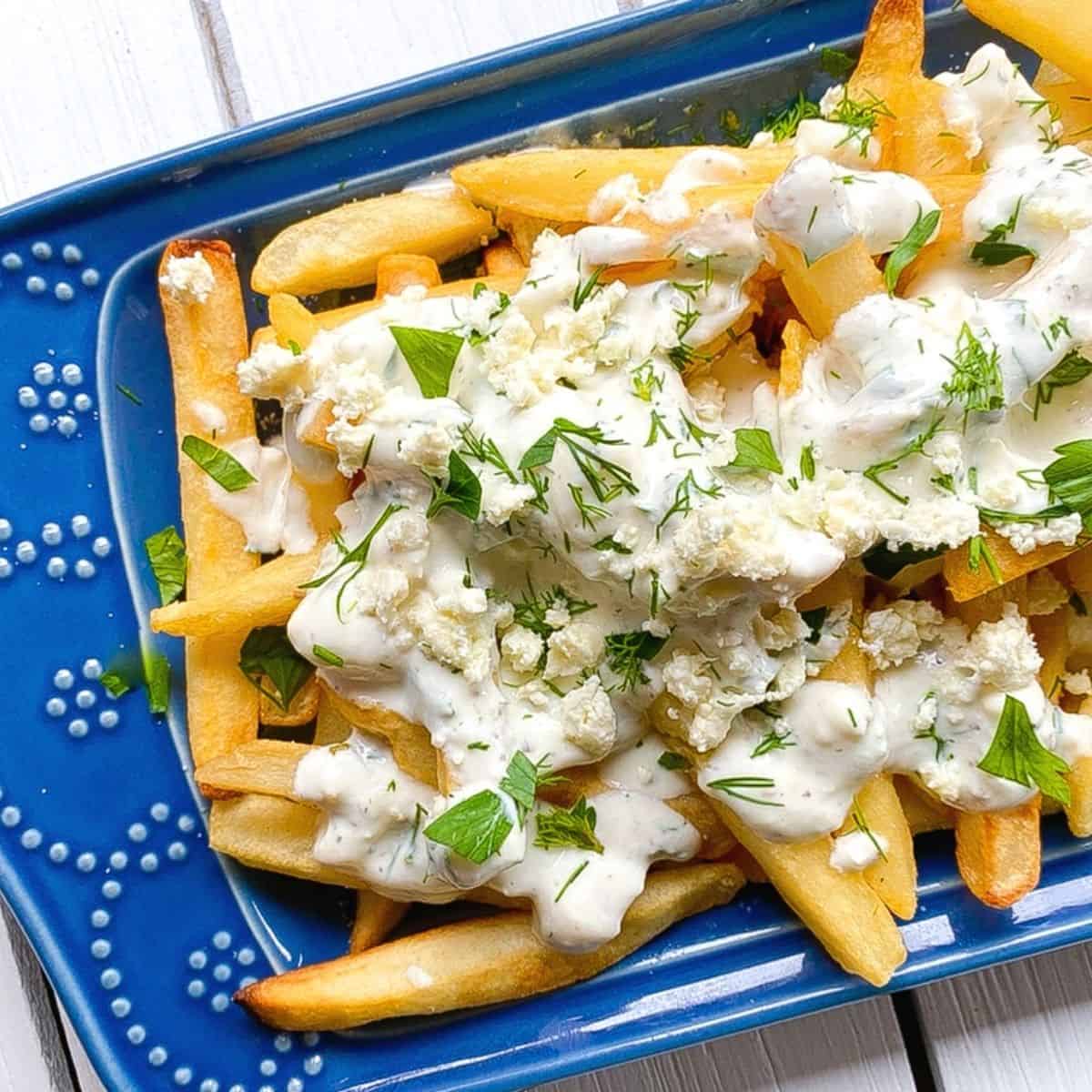
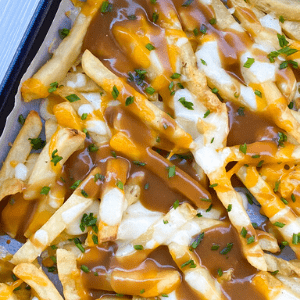

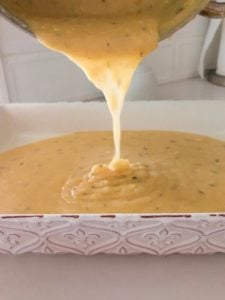
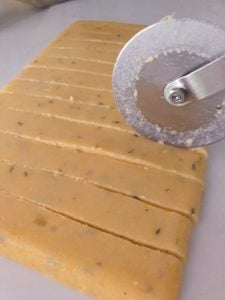



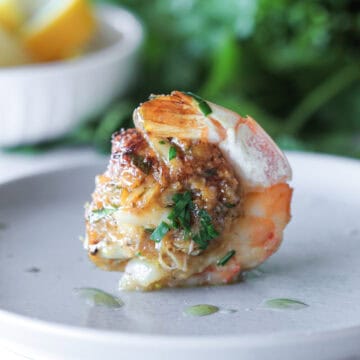
Alexandra @ It's Not Complicated Recipes
Simply scrumptious! And that addition of the honey works so well!
Bite Sized Kitchen
Thank you Alexandra!! 🙂